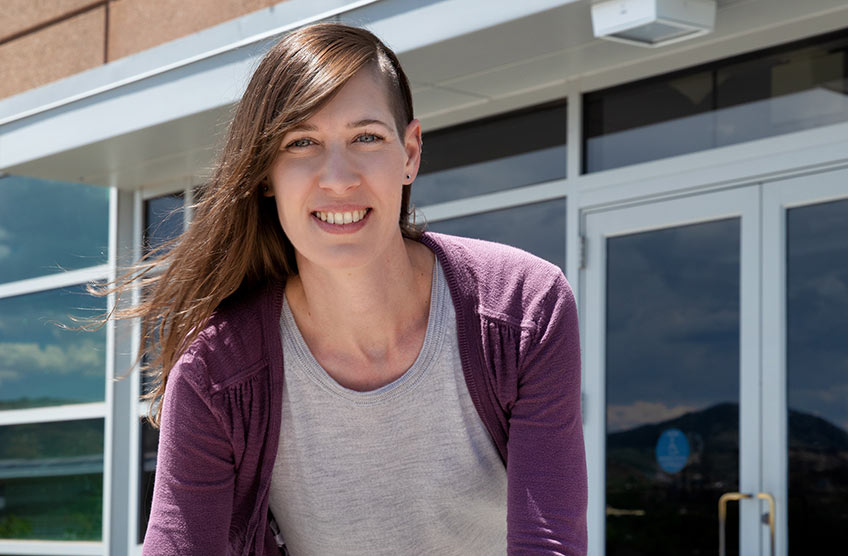Atomic-Level Look at Energy Already Solved One Mystery
Cara Lubner thinks big about small things, a perspective that has been rewarded by the Department of Energy’s Office of Science.
A senior scientist at the National Renewable Energy Laboratory (NREL), Lubner will receive $2.5 million over five years for her research that could lead to better understanding and control of energy at the atomic and cellular levels. The funds are from the Office of Science’s Early Career Research Program.

“If we can understand, on the atomic level, how this system is able to control and manipulate energy, then we can apply these principles to the design of new synthetic catalysts that can perform challenging chemical reactions,” said Lubner, who joined NREL in 2015, four years after earning her doctorate in chemistry from the Pennsylvania State University. She works in NREL's Biosciences Center.
Lubner’s early work at NREL was with the Biological Electron Transfer and Catalysis (BETCy) Energy Frontier Research Center, where she made a breakthrough discovery. Using ultrafast transient absorption spectroscopy, Lubner was able to observe two electrons meeting an enzyme and then splitting into two separate pathways, at dramatically different energy levels, thus triggering two distinct chemical reactions.
The key to understanding how two separate reactions are able to be catalyzed at the same time lies in the properties of the flavin active site. The crucial event happens so quickly—just 10 picoseconds—and explains why this phenomenon had previously escaped notice, Lubner said.
What stands out about bifurcation is that it enables an enzyme to generate a product that is more energetic than the starting material, without violating any scientific laws. That’s counter to what normally occurs, when there’s some energy loss typically given off as heat and only lower-energy products are made.
“In this case, we think that it’s taking that energy that would normally be lost and using it to drive the other reaction,” Lubner said. “Overall, the thermodynamics work out. You don’t create something from nothing, which you can’t do. But in terms of having actual experimental insight into how the reactions are coupled and a robust understanding of how the environment around the flavin confers it with the right attributes to perform bifurcation, we’re not there yet. That’s the objective of this research.”
The early career funding program is now in its 10th year. Lubner’s project is titled “Elucidating the Mechanistic Determinants of Flavin-Based Electron Bifurcation.” In addition to Lubner, funding also was awarded to two other scientists from NREL: Davinia Salvachúa Rodriguez and Andriy Zakutayev. The Office of Science chooses recipients who have submitted grant applications and received a Ph.D. within the past 10 years.
“These awards are very prestigious and it’s an honor to be chosen. I’m really excited to be part of this program and to have the funding and support to explore the fundamental principles of this important biological catalyst,” Lubner said.
Lubner’s research into the control of energy in bifurcating enzymes opens a pathway into the development of new energy technologies such as novel synthetic catalysts. Industrial catalysts are commonplace, driving chemical reactions that result in such products as ammonia and methanol. Advances in synthetic catalysts are expected to become more necessary, and knowledge gleaned from the reactions powered by biological enzymes will play a role. Flavin is the name for a group of organic compounds, but not each member can bifurcate electrons. Lubner said a better understanding of how some flavins are able to accomplish this might also make it “possible to engineer enzymes or pathways to produce compounds of interest like specialty chemicals or fuels.”
Previously, only two researchers from NREL have been admitted to the Early Career Research Program: Kirstin Alberi and Adele Tamboli.
Last Updated May 28, 2025
